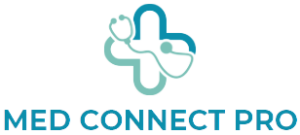TMJ problems can be very painful. They can include jaw pain that worsens with chewing or moving the jaw, a clicking sound (clicking, popping, grating) when opening and closing the mouth, and headaches. There’s no one cause of tmj, though it can be triggered by jaw injuries (like a cracked or dislocated jaw), arthritis in the joint, or problems with how your teeth fit together (malocclusion). Genetics and age also contribute to TMD. Unhealthy behaviors like clenching and grinding your teeth, chewing gum or ice, and leaning on the chin may aggravate TMD.
TMD treatment can include avoiding triggering behaviors such as chewing gum, eating tough foods, and teeth grinding or clenching. It may also involve stress reduction, gentle jaw-stretching exercises, and medications.
Causes
TMD symptoms can be similar to those of chronic headaches, sinus or ear disease, neck pain and upper shoulder problems. That’s why a thorough evaluation of your symptoms by a doctor and dentist is important.
TMD treatment is usually conservative, reversible and non-invasive. This includes eating a soft foods diet, applying cold or warm compresses on the face and jaw, gently massaging the muscles around the jaw, and stress reduction. Over-the-counter medications, like acetaminophen and ibuprofen, may help relieve pain and discomfort. In rare cases, your doctor may prescribe muscle relaxants or inject botulinum toxin type A into the joint.
Symptoms
TMJ disorders often cause pain on one side of the face or jaw, along with clicking and limited jaw movement. These symptoms can also be mimicked by chronic headaches, sinus or ear problems, and neck pain. A comprehensive evaluation – including medical history, exam and imaging – by your dentist and doctor is needed to make the correct diagnosis and determine the best treatment course for you.
TMJ is the abbreviation for your temporomandibular joint, which connects your mandible (lower jaw) to your skull. TMJ disorders can affect the muscles around this joint, or the joint itself. These disorders can be broken down into pure bone and joint problems, or muscular problems such as teeth clenching or grinding (bruxism). Poor posture can also contribute to TMJ pain by putting strain on the joints of the head and neck. TMJ problems can also cause neck and shoulder pain, and even radiate into the arms and legs.
Diagnosis
TMJ symptoms often mimic other health conditions, such as chronic headaches, sinus or ear problems and neck pain. Getting a correct diagnosis requires a thorough medical history and exam, plus imaging and lab work.
A physical exam will usually involve pushing and palpating the area around the ear/jaw joint and muscles. The doctor will measure how wide a person can open their mouth, note whether the teeth meet correctly, and observe if the jaw moves easily or with difficulty.
Other diagnostic tests may include an MRI, which uses a magnetic field to show detailed images of organs and tissues. Treatment for TMJ can include avoiding hard foods, chewing gum or wearing mouth guards at night to protect the teeth, practicing relaxation techniques to reduce stress and avoid unconscious jaw clenching, and taking medication to manage pain or prevent inflammation. Changing posture and reducing chronic neck and shoulder tension can also help, as can learning to eat with the lips closed.
Treatment
TMDs are complex and poorly understood. Some are caused by dental malocclusion, trauma to the jaw or face, clenching or grinding teeth, and poor posture. Others may be caused by a combination of genes, psychological and life stresses, and the way an individual’s body responds to pain.
Your doctor will perform a physical examination of your jaw and neck, and may order an X-ray or CT scan. He or she will check the alignment of your jaw, measure how far you can open your mouth, and press on the muscles that move your jaw (including the masseter and anterior temporalis) to see if they are tender.
Your doctor might recommend a soft diet, stress reduction techniques, or gentle jaw-strengthening exercises. Medication to reduce pain and inflammation, or relax the muscles, might also be recommended. Some treatments, such as prolotherapy (injecting a solution into the joint that causes irritation) or trigger point injections (adding pressure to painful muscle knots), are not supported by scientific evidence and might make your symptoms worse. Your medical or dental insurance plan might not cover these procedures, because they are considered dental rather than medical treatments.
